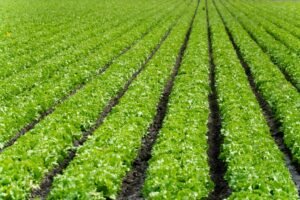California’s agricultural industry is one of the most productive in the world, supplying fruits, nuts, vegetables, and grains to millions of consumers. However, the state’s farmers face constant threats from unpredictable weather patterns. While drought and wildfires often dominate the headlines, hailstorms can also cause devastating damage in just a few minutes—destroying crops and wiping out an entire season’s income. This is where crop-hail insurance comes in. It’s a vital protection plan that helps California farmers safeguard their financial stability against hail-related losses.
Understanding Crop-Hail Insurance
Crop-hail insurance is a specialized policy designed to protect farmers against physical damage to crops caused by hail. Unlike traditional multi-peril crop insurance (MPCI), which covers a wide range of natural disasters, crop-hail insurance focuses specifically on damage caused by hailstorms and, in some cases, related perils such as fire or lightning that may occur during a storm.
The coverage typically compensates the farmer for direct damage to insured crops based on the percentage of loss in the field. For instance, if 40% of a crop is destroyed by hail, the farmer may receive payment for that proportion of the insured value. The flexibility of crop-hail insurance allows farmers to purchase it as an additional layer of protection on top of other crop insurance policies.
Why California Farmers Need Crop-Hail Insurance
While hailstorms in California are less frequent compared to states in the Midwest, they are becoming more unpredictable due to shifting climate patterns. In recent years, areas like the Central Valley, Fresno, and Tulare County have experienced severe hail events that resulted in significant crop losses. Crops such as almonds, grapes, tomatoes, and citrus are particularly vulnerable to hail damage, which can bruise fruit, shred leaves, and reduce market quality.
Without adequate coverage, even a short-lived hailstorm can lead to massive financial losses for farmers. Since many agricultural operations in California run on tight profit margins, one severe storm can disrupt cash flow, delay planting, and even threaten a farm’s survival. Crop-hail insurance offers peace of mind by ensuring that a sudden storm doesn’t destroy an entire year’s worth of investment.
The Financial Benefits of Crop-Hail Insurance
One of the major advantages of crop-hail insurance is that it allows farmers to recover quickly after a loss. Because claims are typically processed faster than multi-peril policies, farmers can use payouts to cover replanting costs, loan payments, and operational expenses. This helps maintain business continuity and protects long-term profitability.
Another benefit is that crop-hail insurance can be customized to fit a farm’s specific needs. Farmers can choose coverage levels based on crop type, acreage, and regional risk factors. Since the policy can be purchased at almost any time during the growing season—unlike MPCI, which has strict federal deadlines—it provides flexibility when weather conditions suddenly change.
Differences Between Crop-Hail and Multi-Peril Crop Insurance
Although both crop-hail and multi-peril crop insurance protect against weather-related losses, they serve different purposes. Multi-peril crop insurance, which is subsidized by the federal government, covers a wide range of natural disasters like drought, flood, frost, and disease. Crop-hail insurance, on the other hand, is a private policy that focuses exclusively on hail damage.
Many California farmers choose to carry both types of coverage. The combination ensures comprehensive protection against most risks while providing the fast, targeted support needed after a hailstorm. For high-value crops like almonds, grapes, or avocados, this dual-layered approach is often the best way to protect revenue.
How Crop-Hail Insurance Premiums Are Determined
The cost of crop-hail insurance in California depends on several factors, including the type of crop, acreage, location, and the historical frequency of hail events in the area. Premiums are typically lower in regions where hail is rare, making it a cost-effective option for farmers who want affordable protection against unexpected storms.
Farmers can work closely with insurance agents to tailor policies that fit their budget and risk tolerance. Adjusting coverage limits and deductible options allows for greater control over both premiums and potential payouts.
The Growing Need for Crop-Hail Insurance in California
As climate change continues to impact weather patterns across California, hailstorms are becoming more sporadic and severe. Areas that rarely experienced hail in the past now face new risks, making it essential for farmers to review and update their insurance strategies. The cost of recovering from an uninsured hail event can be far higher than the cost of maintaining annual coverage.
Beyond financial protection, crop-hail insurance also contributes to long-term business resilience. By stabilizing income, it allows farmers to plan for growth, invest in better technology, and continue operations even after a damaging event.
Conclusion
Crop-hail insurance is an essential tool for California farmers looking to protect their crops, income, and livelihoods from the unpredictable forces of nature. With increasing weather volatility, no farm—no matter how experienced—can afford to overlook the potential impact of hail damage. This specialized insurance provides fast, flexible financial relief that keeps your operation stable even after the storm passes.
For expert guidance on choosing the right crop-hail insurance policy for your California farm, visit Western Insurance







